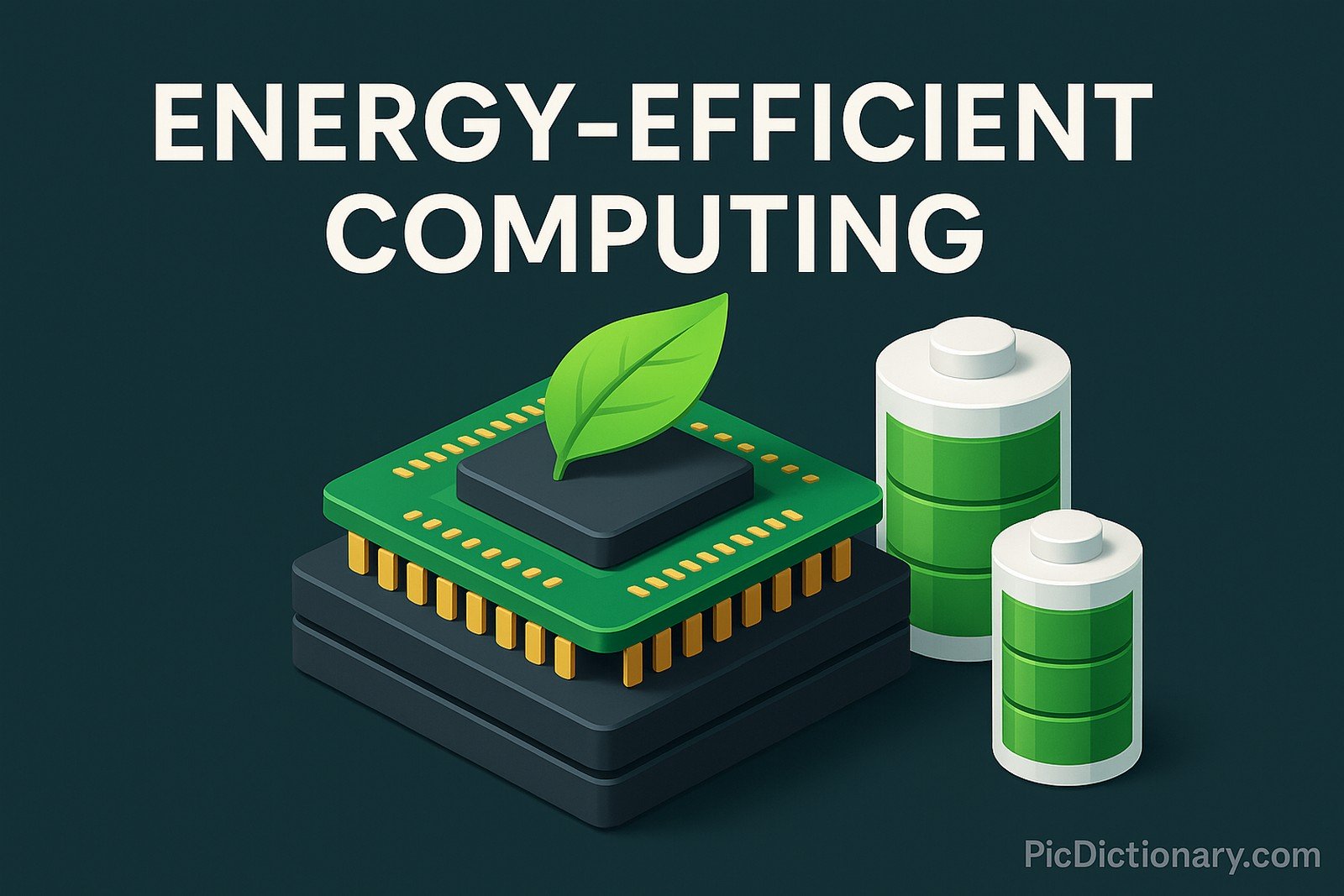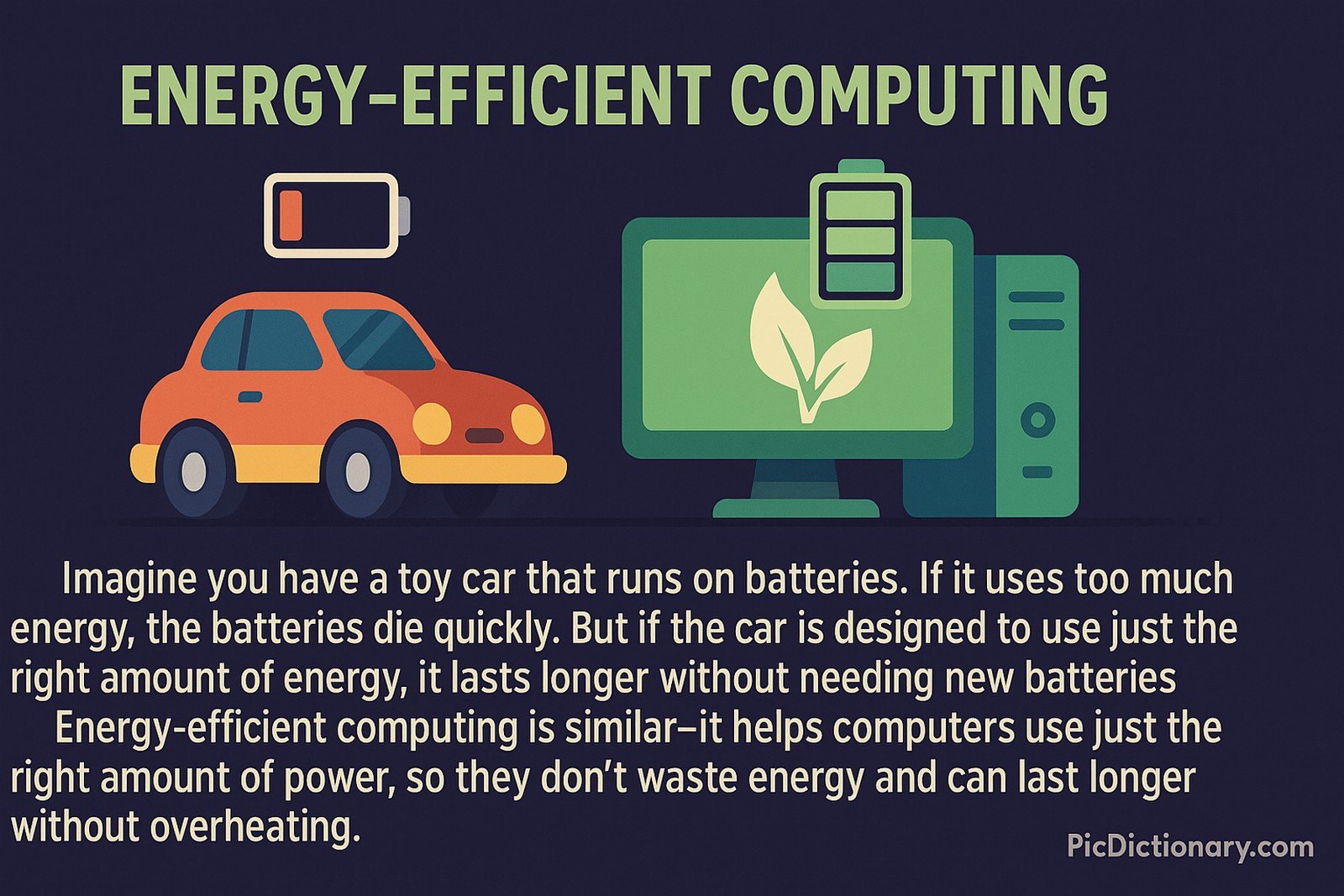Energy-Efficient Computing

Quick Navigation:
- Energy-Efficient Computing Definition
- Energy-Efficient Computing Explained Easy
- Energy-Efficient Computing Origin
- Energy-Efficient Computing Etymology
- Energy-Efficient Computing Usage Trends
- Energy-Efficient Computing Usage
- Energy-Efficient Computing Examples in Context
- Energy-Efficient Computing FAQ
- Energy-Efficient Computing Related Words
Energy-Efficient Computing Definition
Energy-efficient computing refers to the design and implementation of computer hardware, software, and systems that minimize energy consumption while maintaining optimal performance. This concept is critical in data centers, mobile devices, and embedded systems, where power efficiency directly impacts operational costs and environmental sustainability. Techniques such as dynamic voltage scaling, power-aware computing, and hardware optimization contribute to achieving energy efficiency.
Energy-Efficient Computing Explained Easy
Imagine you have a toy car that runs on batteries. If it uses too much energy, the batteries die quickly. But if the car is designed to use just the right amount of energy, it lasts longer without needing new batteries. Energy-efficient computing is similar—it helps computers use just the right amount of power, so they don't waste energy and can last longer without overheating.
Energy-Efficient Computing Origin
The concept of energy-efficient computing emerged in the late 20th century as personal computers and servers became more widespread. With increasing energy costs and environmental concerns, researchers and engineers sought ways to improve power efficiency in computing devices. The rise of mobile computing, cloud services, and data centers accelerated the need for energy-aware technologies.
Energy-Efficient Computing Etymology
The term “energy-efficient computing” combines "energy-efficient," meaning using minimal energy for maximum output, and "computing," which refers to the process of performing calculations and processing data.
Energy-Efficient Computing Usage Trends
With the growth of cloud computing and artificial intelligence, energy-efficient computing has become a priority in reducing the carbon footprint of large-scale data centers. Tech companies are investing in renewable energy sources, optimizing software algorithms, and using specialized hardware like ARM processors to improve efficiency. Additionally, green computing initiatives and government regulations are driving advancements in energy-aware technologies.
Energy-Efficient Computing Usage
- Formal/Technical Tagging:
- Power-Aware Computing
- Green Computing
- Low-Power Computing - Typical Collocations:
- "energy-efficient processor"
- "low-power computing architecture"
- "power-aware computing techniques"
- "reducing energy consumption in data centers"
Energy-Efficient Computing Examples in Context
- Data centers use advanced cooling techniques to reduce energy consumption while keeping servers at optimal temperatures.
- Smartphones employ energy-efficient processors to extend battery life without compromising performance.
- Software developers optimize algorithms to reduce power consumption in mobile applications.
Energy-Efficient Computing FAQ
- What is energy-efficient computing?
Energy-efficient computing refers to the optimization of computer systems to use minimal power while maintaining performance. - Why is energy-efficient computing important?
It helps reduce electricity costs, lowers carbon emissions, and extends the lifespan of devices. - How do computers achieve energy efficiency?
By using power-aware processors, optimizing algorithms, and implementing hardware-level power-saving techniques. - What industries benefit from energy-efficient computing?
Industries such as cloud computing, mobile technology, and IoT (Internet of Things) benefit significantly from energy-efficient computing. - How do data centers improve energy efficiency?
By using renewable energy sources, advanced cooling systems, and optimized server virtualization. - What role does software play in energy-efficient computing?
Efficient software design can reduce the number of computational cycles, lowering energy consumption. - Are energy-efficient computers slower?
No, modern advancements allow for power efficiency without sacrificing performance. - What are some examples of energy-efficient hardware?
ARM processors, low-power GPUs, and SSD storage devices are common examples. - How can individuals make their computers more energy-efficient?
By enabling power-saving settings, using energy-efficient hardware, and reducing background processes. - What is the future of energy-efficient computing?
The future includes AI-driven power management, more efficient semiconductor materials, and increased reliance on renewable energy sources.

Energy-Efficient Computing Related Words
- Categories/Topics:
- Green Computing
- Power Optimization
- Low-Energy Architecture
Did you know?
Google and Microsoft have developed AI-driven cooling systems for their data centers, reducing energy consumption by up to 40%. These intelligent systems analyze temperature, humidity, and workload to optimize cooling mechanisms, showcasing the power of energy-efficient computing in real-world applications.
PicDictionary.com is an online dictionary in pictures. If you have questions or suggestions, please reach out to us on WhatsApp or Twitter.Authors | Arjun Vishnu | @ArjunAndVishnu

I am Vishnu. I like AI, Linux, Single Board Computers, and Cloud Computing. I create the web & video content, and I also write for popular websites.
My younger brother, Arjun handles image & video editing. Together, we run a YouTube Channel that's focused on reviewing gadgets and explaining technology.



Comments powered by CComment